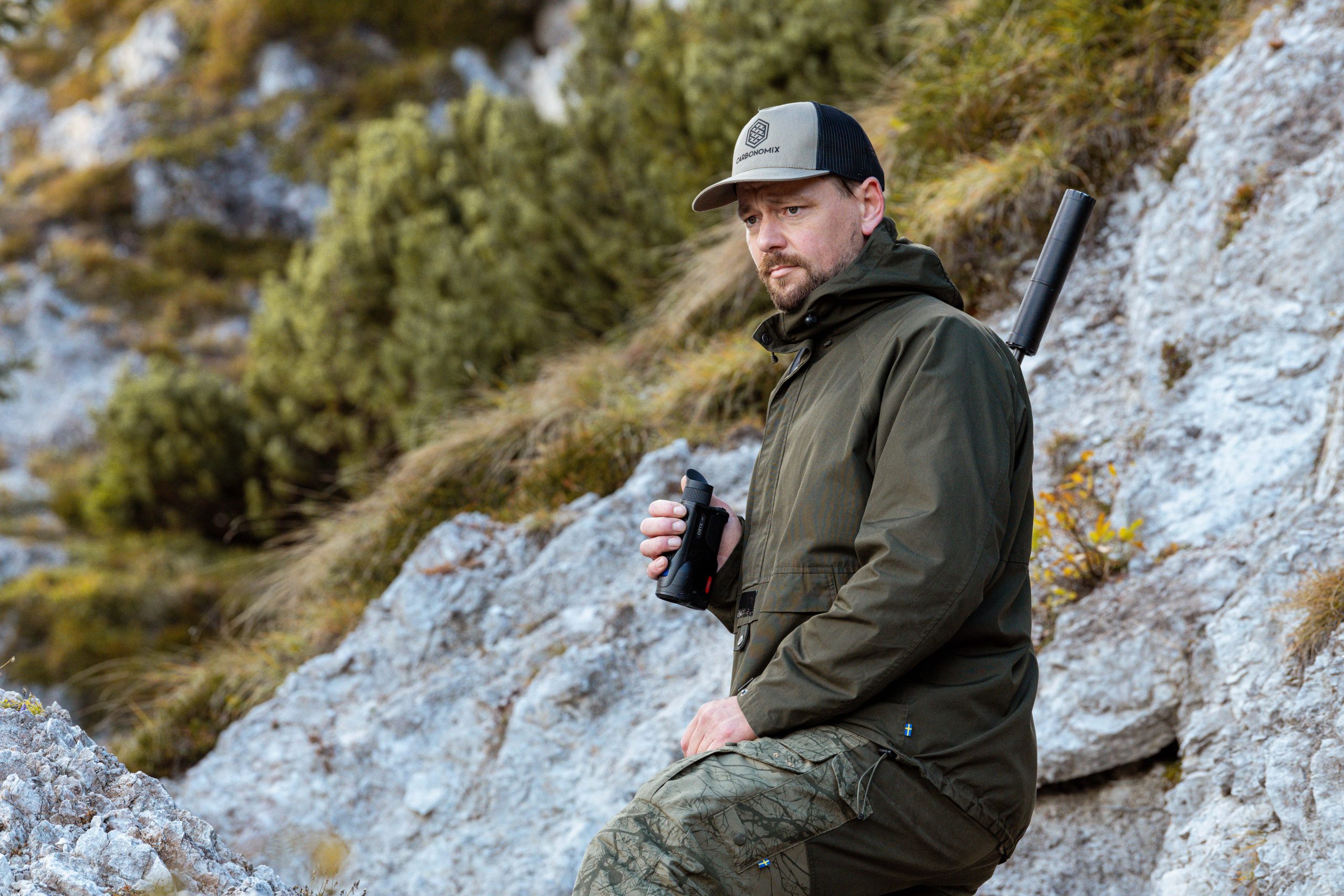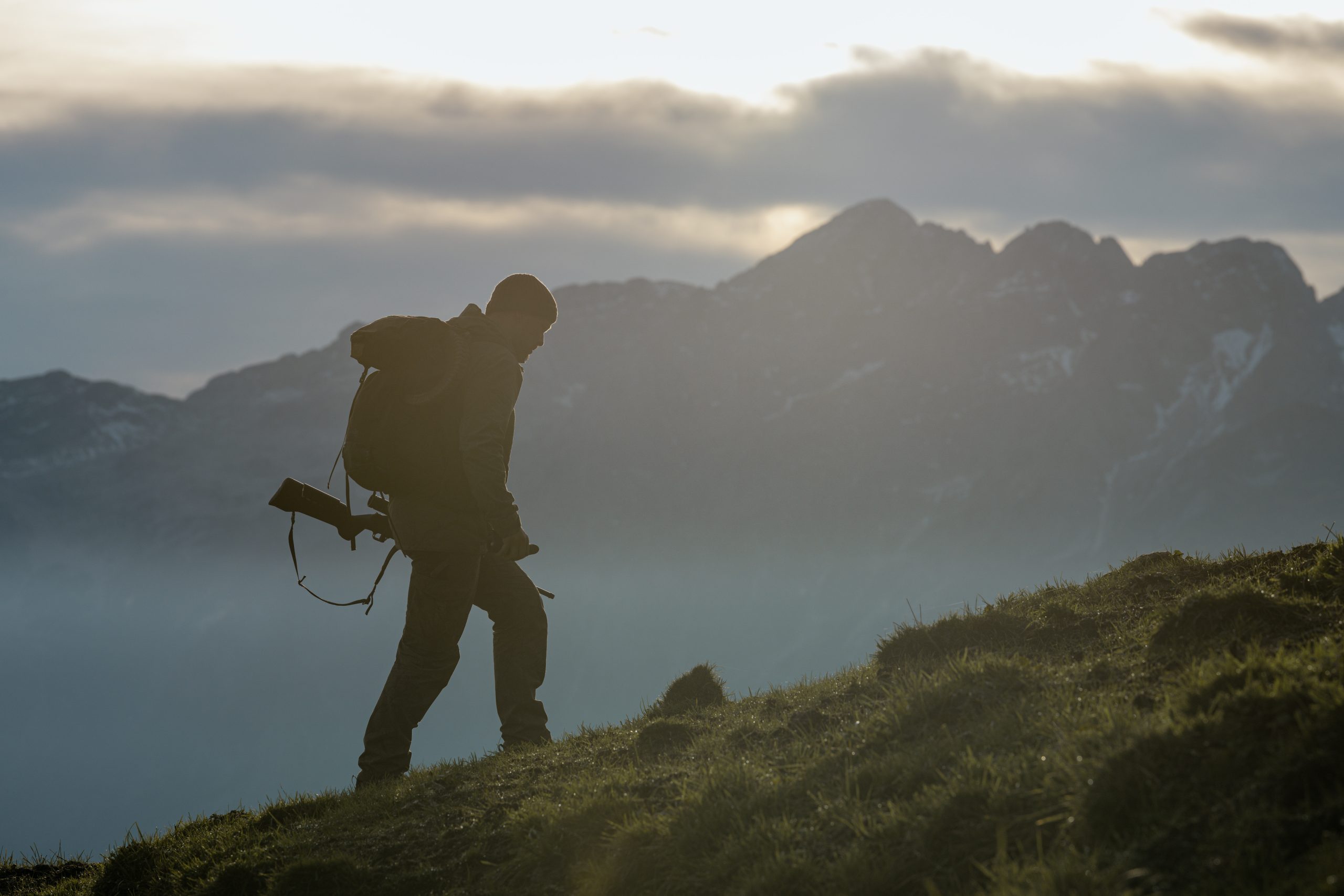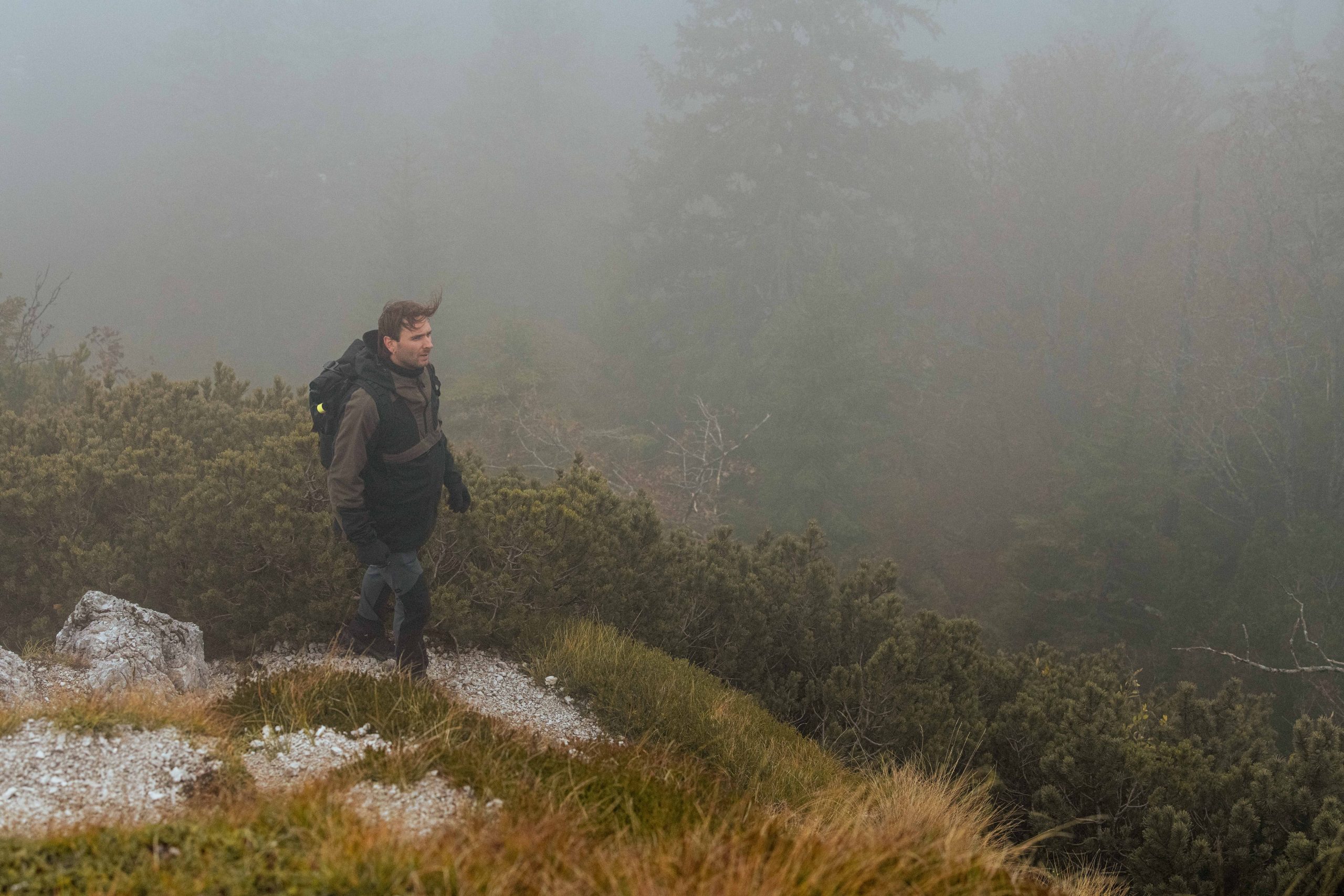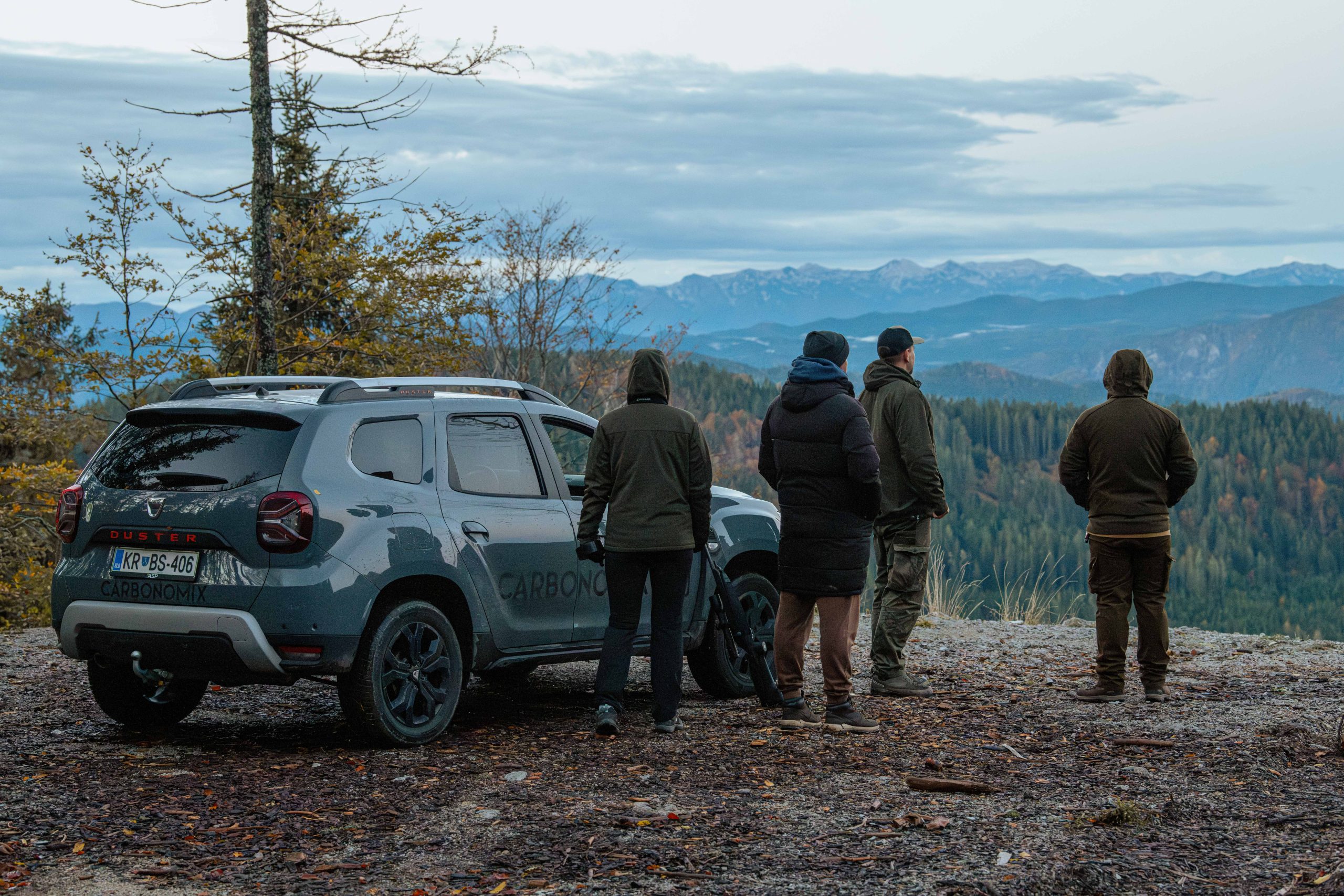Expert Contributor:
Nace Mihelic
“In the mountains, you have a lot of rough terrain and tough and quickly changing, all in all – difficult conditions,” says Nace Mihelic, a Slovenian hunter we partnered with for the launch of our Oryx LRF XG35, the new and very durable thermal imaging monocular. The collaboration seemed natural – as Nace himself explains, “In those conditions, only the best and most rugged equipment prevails.”
So, what makes mountain hunting so appealing? And what does it take to capture moments like these? Let’s explore.

The perfect match
When our R&D department first showcased the Oryx LRF XG35, we instantly knew we wanted to feature it in the mountains. Lightweight, operable with one hand, resistant to environmental challenges, and powered by a long-lasting battery, the new thermal monocular sees far and wide. It’s hard to imagine a better companion for navigating demanding terrain.
Soon enough, we settled on Nace – a hunter with many years of experience in the mountains and an avid user of Pulsar devices. He knows the locations, the precautions that need to be taken, and, of course, the animals we were after – chamois.
Nace’s approach to hunting and nature was the cherry on top. The respect he has for the environment is immense, and he’s well aware that we humans can never fully tame it. As Nace himself puts it, “No matter how cautious or vigilant or knowledgeable you are, unexpected things can happen. Nature is way stronger than us, you have to take that into account.”
No matter how cautious or vigilant or knowledgeable you are, unexpected things can happen. Nature is way stronger than us, you have to take that into account.
Nace Mihelic
At the same time, he admits that this unpredictability is what makes mountain hunting so exciting. That’s not to say he hasn’t had any accidents – once, he slipped on a loose stone, resulting in a 70-meter fall and three broken vertebrae. Luckily, he’s fully recovered now.
These days, you’ll hardly see Nace go into the mountains without his trusty walking stick – hand-carved and more than a hundred years old, it was a gift from his father. As he explains, aside from the personal, sentimental value, the stick provides a third anchor point — so if you lose your footing, you still have enough support to avoid major accidents. Crossing steep slopes while holding a stick means you only have one hand free, so having a device like the Oryx LRF lets you stay informed and safe at the same time.
Hunting in the mountains
Nace’s story of becoming a mountain hunter is quite an unusual one. He first applied for a hunting license because he wanted to become a ranger in a local national park. But then, his older brother took him to observe chamois and taught him how to behave in the mountains – and he was hooked. “From the first mountain hunt, I can’t imagine a season without actively hunting when there’s a lot of snow and difficult conditions, because that’s what makes it the most challenging,” shares Nace.
Hunting in Nace’s territory demands a lot: you need solid knowledge of the mountains and terrain, sure footing, and strong hiking skills. Then there’s understanding the game itself – how the animals move, feed, and adapt to mountain conditions.
Chamois, in particular, tend to stay in the highest pastures, where there’s less disturbance – and in early winter, it’s often warmer up there than in the valleys. As Nace notes, chamois have excellent eyesight, so you need to spot them from as far as possible, making thermal vision essential. Plus, “thermal devices allow you to also spot the animals that are not directly visible to you in the line of sight, but that are hiding in some light vegetation. Thermal is a huge help there because with chamois, as they are often in herds, if you spook one animal, the whole herd will be gone soon.”
Hunting chamois means a lot of walking – from one ridgeline to another – until you find the right group in the right position. And when you do, you don’t have much time to decide whether to take the shot. There’s no cover at the top, so you have to act fast. “Because of the open terrain, the shot would be from 250 to 350 meters, in some cases even 500, if need be and if there’s a shootable animal present to take. The laser rangefinder in the device helps us gain the proper ballistics straight away,” explains Nace.
Capturing the mountains
“In the mountains, you have to be especially picky about your equipment because every gram matters when you have to bring down not only the animal but the gear down as well,” says Nace. That includes not just hunting gear but also any tools used to document the journey.
Our team’s physical fitness was put to the test. We were after epic views, which meant long hikes – there are no roads that high up. And while hiking is always enjoyable, doing it with packs full of equipment and limited daylight quickly turns fun into fatigue.
The weather didn’t make it easier, either. Mountain conditions are famously unpredictable. One morning, Nace arranged a cable car to help us move some gear. The rest of us hiked and were rewarded with a stunning view. We planned to return to the same spot the next day, so we stayed overnight in a nearby mountain chalet, hoping for a magical sunrise.
Instead, we woke up to thick clouds and barely any visibility. Still, we made the most of it – snapping photos in the gloomy, moody atmosphere. The conditions required last-minute changes and a lot of improvisation. We’ll let you judge the results – but if you ask us, the hard work paid off.
In the end, it wasn’t just about showcasing a product. It was about immersing ourselves in a world that demands respect, resilience, and readiness for the unexpected. And with the right people – and the right gear – that world becomes not just accessible, but unforgettable.
Before purchasing any night or thermal vision device, please make sure you adhere to the local legislation and only use it when it is allowed. Our ambassadors come from various countries and travel a lot, which allows them to test different devices. We do not encourage or support the illegal use of our devices in any events. If you wish to learn more about export and sales restriction policy, please visit the following link: Export and Sales Restriction Policy.




